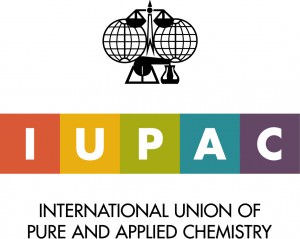IUPAC Full Form | What is International Union of Pure and Applied Chemistry
What is the full form of IUPAC?
IUPAC: International Union of Pure and Applied Chemistry
IUPAC stands for International Union of Pure and Applied Chemistry. It is the universally-recognized authority on chemical nomenclature and terminology that also includes naming new elements, standardizing measurement's methods, and other such data. Besides this, it also plays important roles such as a leader in the availability of scientific expertise to resolve sensitive global issues related to various aspects of chemistry.
authority on chemical nomenclature and terminologyauthority on chemical nomenclature and terminology
It is a global alliance of national adhering organizations that represents chemists in their countries. It is also a member of the International Science Council (ISC). The organization unites chemists across the world by providing a common language and standards for chemistry and by promoting the free exchange of scientific information in the field of chemistry.
member of the International Science Council (ISC).member of the International Science Council (ISC).IUPAC was established in 1919 by chemists who felt the need for international standardization in chemistry. The standardization of names, symbols, weights, etc., is important for the smooth and continuous growth of the scientific community, international trade and commerce. The need for international cooperation and simplification of the work among chemists and chemistry communities across the world were the primary desire of the Union.
established in 1919established in 1919The members of IUPAC are present across the world that forms a worldwide chemistry network. Its members, associates and affiliates include chemical societies, industrial companies, research and development institutions, universities, laboratories, etc.
The leadership or top management of IUPAC comprises the President, the Vice-President, the Secretary-General and the Treasurer. It is headed by the president who chairs the meetings of the council and acts as an ex officio member of all bodies of the Union.
top management of IUPAC comprises the President, the Vice-President, the Secretary-General and the Treasurer.top management of IUPAC comprises the President, the Vice-President, the Secretary-General and the Treasurer.headed by the presidentheaded by the presidentDivisions:
The council has various divisions to lead its scientific activities. Each division represents a specific branch of chemistry that is indicated by the name of the division and works under the aegis of the IUPAC Bureau. The divisions are responsible for the scientific exchange of information, knowledge and other things related to addressing problems and offer recommendations on nomenclature, symbols, terminology, etc.
As of now, it has the following eight divisions:
- Inorganic Chemistry Division
- Polymer Division
- Physical and Biophysical Chemistry Division
- Organic and Bio molecular Chemistry Division
- Analytical Chemistry Division
- Chemistry and the Environment Division
- Chemical Nomenclature and Structure Representation
- Chemistry and Human Health Division
The governance of IUPAC works through three inter-connected units that include the Council, the Bureau, and the Executive Committee. Besides this, it also has various bodies such as standing committees, commissions, divisions, etc., to achieve its goals and objectives.